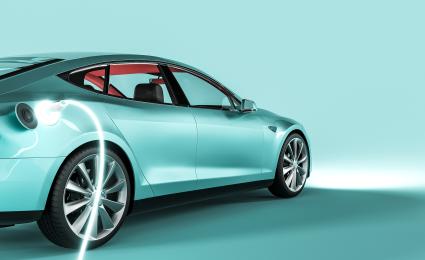Roland Berger presents a toolkit to understand opportunities and risks for your business in EV charging.


The overlooked opportunity? AC charging is here to stay
By Adam Healy and Tim Longstaff
A key enabler of affordable public charging and balancing energy grids
DC (direct current) charging, which typically enables higher-power, faster charging of electric vehicles (EVs), has garnered much attention in the early growth stages of the market The number of (ultra-)rapid DC public charging devices in the UK has more than tripled since 2020, outpacing growth in lower-power AC (alternating current) devices, with capital flowing in the direction of hardware OEMs (original equipment manufacturers) and CPOs (charge point operators) accordingly – and with good reason, as demand for public, higher-power charging grows. All the while, public AC charging has been the focus of less attention.
-(1)_image_caption_none.jpg?v=1182135)
"It has been the subject of fewer headlines, but slow AC charging is a critical enabler of affordable and accessible public charging."
There are several reasons for this. DC (ultra-)rapid charging is most used when an EV driver needs to add charge quickly and alternative options are scarce, such as at motorway service areas, or at forecourts or charging hubs on major routes, effectively as a direct substitute for a petrol pump. Drivers pay a premium for a faster flow of electrons, which in turn translates to higher absolute unit gross profits for CPOs. Meanwhile, AC technology is commonly deployed in (semi-)public charging use cases with longer dwell times where a high charging speed is less critical, such as on-street in residential neighborhoods, and at workplaces.
Perhaps it is its lower unit profits, or its lower capital requirements pushing it outside the crosshairs of infrastructure investors, or even its diverse proposition across many use cases, but we would observe that AC charging is deemed less attractive by many operators of, and investors in, public charging networks. We argue that while DC can offer superior returns, AC can be a less complex and lower-risk play, and is critical to the future of public charging and the efficient operation of a smart grid.
A place for (semi-)public AC charging
The choice of charging technology is closely related to the use case and thus the location of the charger. Almost all at-home charging is done via lower-power AC chargers since vehicles are mostly charged when parked for long periods during the day or overnight. On the other end of the spectrum – virtually all ‘on-route’ or ‘on-the-go’ charging uses DC, and more increasingly, ultra-rapid or high-power charging (e.g. 150+ kW), as time is usually of the essence. There are, however, several segments of charging demand (where EV drivers do not have access to private domestic or workplace charging, and where the need for short dwell time 'on-route' charging is limited) which are up for grabs by different longer dwell time public use cases, some of which could viably use both AC and DC chargers. The extent to which AC charging is used in these applications is what will determine the future size of the AC charging opportunity.
_image_caption_none.png?v=1182132)
While there is a natural human attraction to faster and more apparently modern solutions like DC charging, and while some investors may find it easier to grasp the concept of high power chargers as a direct substitute for petrol pumps, there are several reasons to believe that AC chargers are not only the cheaper, but also the most appropriate product in many use cases.
"AC charging in longer-dwell time use cases opens up the potential for valuable grid balancing and arbitrage opportunities such as smart charging."
How the need for AC charging might develop
Currently, AC chargers are most prevalent in public street-side parking, such as in the Ubitricity (now Shell Recharge) network of devices in lampposts or the Source London hardware distributed across streets in the UK capital. Semi-public sites (these are not fully private because a significant subset of EV users can use them) where dwell times are typically longer, such as office car parks, hospitals, and shared residential parking (e.g. for a block of flats) have tipically been equipped with AC chargers.
![UK EV Charging energy demand by use case [ TWh ]](https://img.rolandberger.com/content_assets/content_images/captions/Roland_Berger_24_2595_AC_Charging_the_overlooked_opportunity-GT02-(2)_image_caption_none.png?v=1182131)
We believe that AC charging is critical to creating a (semi-)public charging network that best satisfies the needs of the future EV parc. Based on our forecast of UK EV charging demand (Figure 2), we expect the segment of the market that is 'contested' between AC and DC charging, will grow ~80x over the next 25 years, from ~25% of demand today to ~45% by 2050, as access to private charging at home becomes less prevalent in future EV driver cohorts and public charger density increases.
Register now to access the full publication “The overlooked opportunity? AC charging is here to stay” and delve into the essential role of AC charging in supporting public infrastructure and enhancing energy grid stability. Furthermore, you get regular news and updates directly in your inbox.





